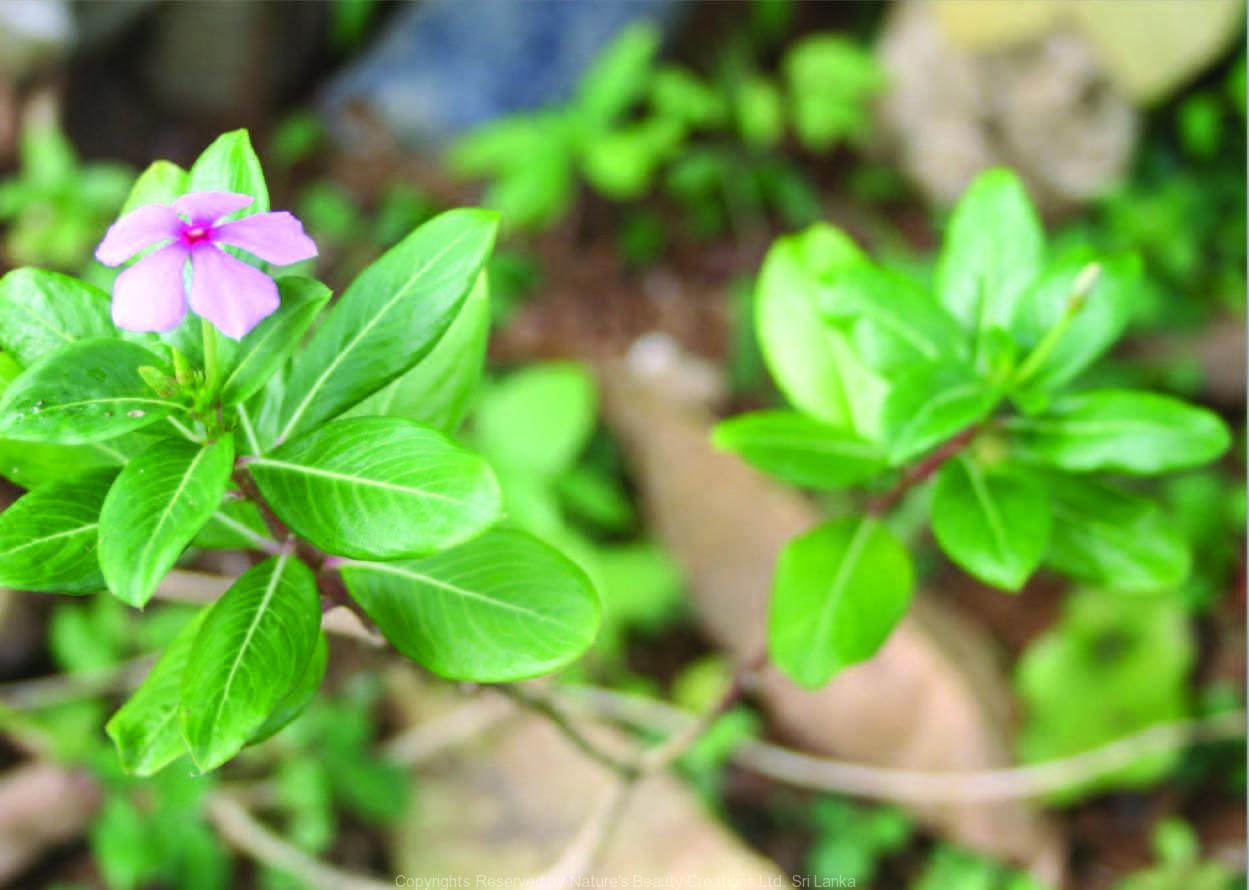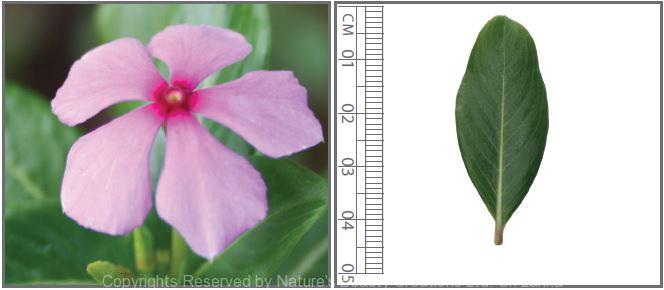

Traditional Knowledge
Useful plant parts :
Leaf, flower and root
Uses in traditional medicine :
- Boiled leaves are used for diabetes, rheumatism and blood cancer
- Tea made out of dried flowers is a good remedy for diabetes
- Root acts as an emmenagogue, antidysentery, purgative, vermifuge and depurative
- Used in haemostasis and toothaches
Scientific Research
Chemical constituents:
Vinca alkaloids: vinblastine, vincristine, vindesive, vinorelbine and their derivatives from plant
Bioactivity :
Leaf juice or water decoction: antidiabetic; methanol extract of aerial parts: antiproliferative; ethanol extract of leaves: antibacterial; ethanol extract of flowers: wound healing
Clinical:
Intralesional vinblastine is reported as an effective therapy for AIDS-KS
Note :
Anticancer drugs vincristine and vinblastine were initially isolated from plant
References : Alison, A. B. M. D. et al., (1993), Intralesional vinblastine for cutaneous Kaposi’s sarcoma associated with acquired immunodeficiency syndrome: A clinical trial to evaluate efficacy and discomfort associated with injection, Journal of the American Academy of Dermatology, 28(1), 61-65. Chen, Q. et al., (2013), Identification and quantification of active alkaloids in Catharanthus roseus by liquid chromatography-ion trap mass spectrometry, Food Chem, 139(1-4), 845-52. El-Sayed, A and Geoffrey A. C., (1981), Catharanthus Alkaloids. XXXIV. Catharanthamine, A New Antitumor Bisindole Alkaloid from Catharan- thus roseus, Journal of natural products, 44(3), 289-293. Goyal, P., (2008), In vitro evaluation of crude extracts of Catharanthus roseus for potential antibacterial activity, International Journal of Green Pharmacy, 2(3), 176-181. Himes, R. H., (1991), Interactions of the catharanthus (Vinca) alkaloids with tubulin and microtubules, Pharmacol Ther, 51(2), 257-67. Kohlmunzer, S., (1968), Alkaloids of Catharanthus roseus G. Don.–new group of biologically active compounds, Postepy Biochem, 14(2), 209-32. Kong, J. M. et al., (2003), Recent advances in traditional plant drugs and orchids, Acta Pharmacol Sin, 24(1), 7-21. Leveque, D. et al, (1996), Pharmacology of Catharanthus alkaloids, Bull Cancer, 83(3),176-86. Nammi, S. et al., (2003), The juice of fresh leaves of Catharanthus roseus Linn. reduces blood glucose in normal and alloxan diabetic rabbits, Complementary and Alternative Medicine, 3(4). Nayak, B. S. et al., (2006), Catharanthus roseus flower extract has wound-healing activity in sprague dawley rats, BMC complementory and alternative medicine, 6(41). Noble, R. L. et al., (1990), The discovery of the vinca alkaloids- chemotherapeutic agents against cancer, Biochemistry and Cell Biology, 68(12), 1344-1351 Ueda, J. Y. et al., (2002), Antiproliferative Activity of Vietnamese Medicinal Plants, Biological and Pharmaceutical Bulletin, 25(6), 753-760.
Copyrights Reserved By
Natures Beauty Creations




